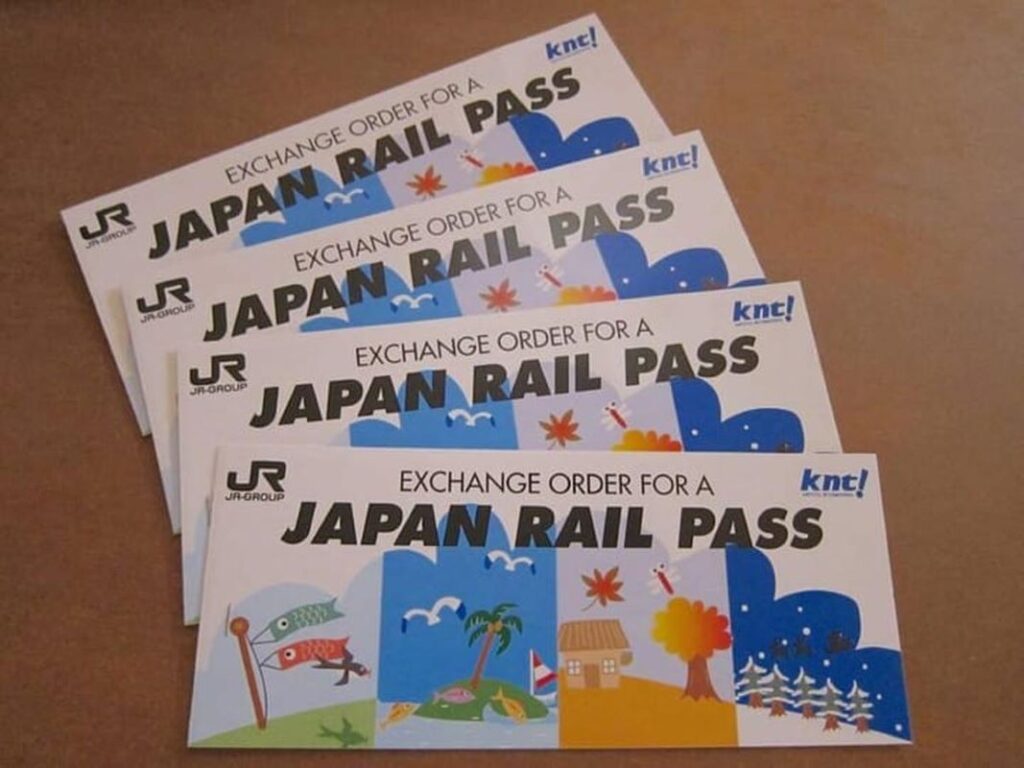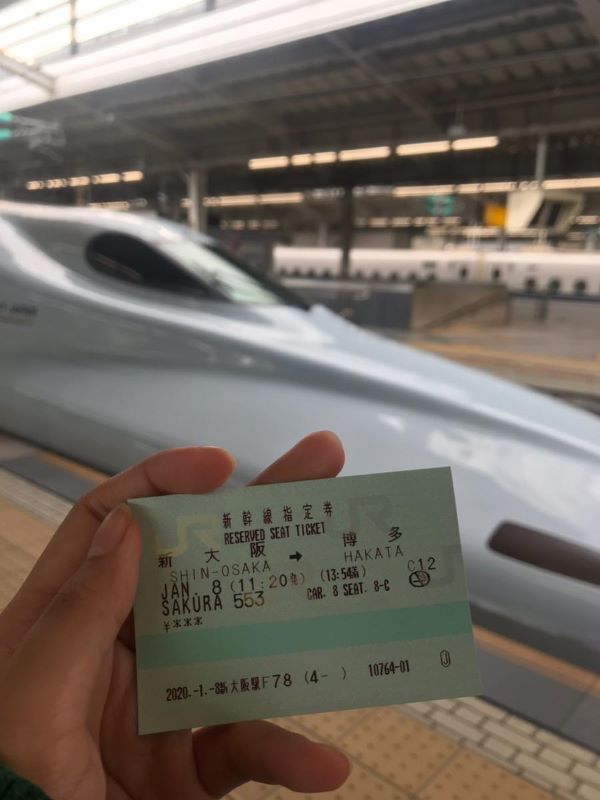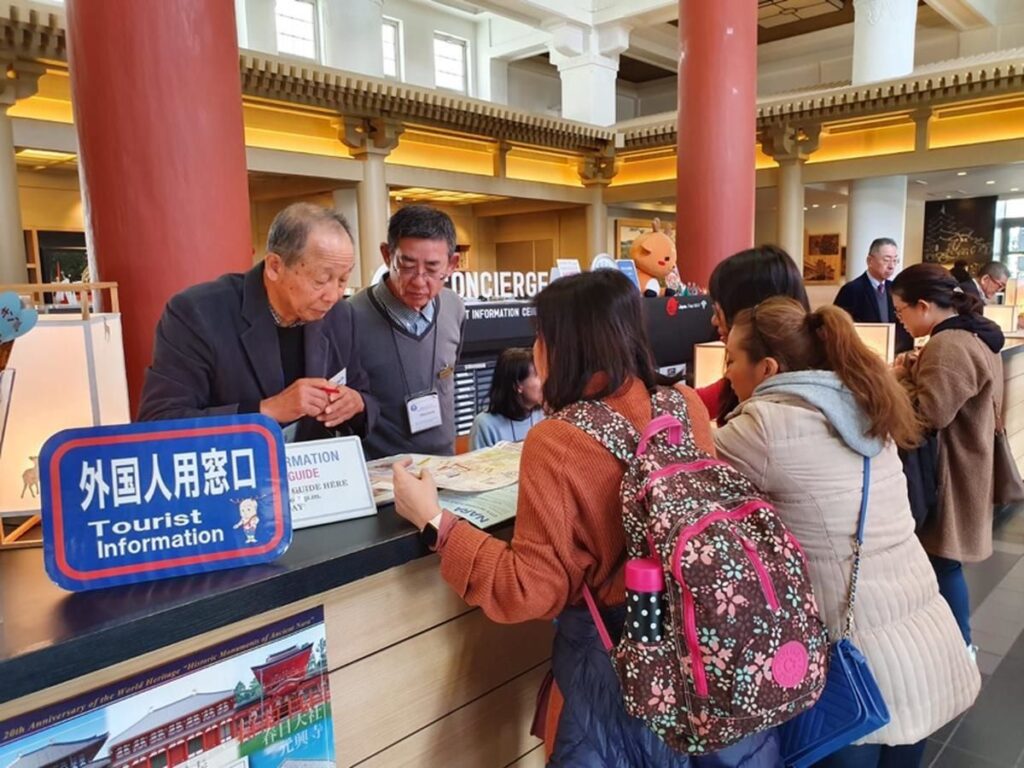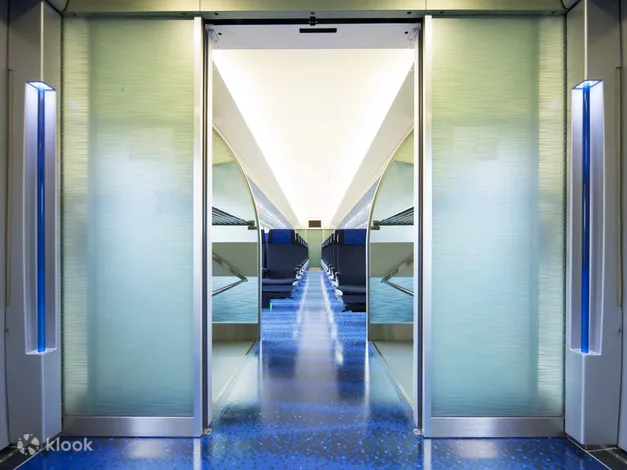The Japan Rail Pass is a popular option for tourists visiting Japan, as it allows unlimited travel on JR trains for a set period of time. However, the pass can be quite expensive, and travelers may wonder if it’s worth the cost. This in-depth guide will explore the Japan Rail Pass in detail, examining its benefits and drawbacks to help travelers decide if it’s the right choice for them.

In this guide, we’ll cover all the different types of Japan Rail Passes available, how to purchase them, and how to use them. The guide will also provide tips on getting the most value out of the pass, such as planning an itinerary that maximizes train travel. Additionally, the guide will compare the cost of the pass to the cost of buying individual train tickets, as well as other transportation options, to help travelers make an informed decision.
Whether travelers are planning a short trip to Japan or an extended stay, this guide will provide valuable information on the Japan Rail Pass and whether it’s worth the investment. By the end of the guide, readers will have a better understanding of the pass and be able to make an informed decision on whether to purchase it for their trip.
What is the Japan Rail Pass?
The Japan Rail Pass is a discounted travel pass offered by Japan Railways (JR) exclusively for foreign tourists. It allows unlimited travel on most JR trains, including the high-speed Shinkansen bullet trains, for a fixed period of time. The pass can be used on any JR line, including the Yamanote Line in Tokyo, the Osaka Loop Line, and the Hokkaido Shinkansen.
The pass comes in three different durations: 7, 14, or 21 consecutive days. It is important to note that the pass is only available for purchase outside of Japan, so travelers must buy it before arriving in the country.

The Japan Rail Pass also includes some non-JR trains, such as the Tokyo Monorail and the Aoimori Railway between Aomori and Hachinohe, but it does not cover all trains in Japan. Travelers should check the JR website or consult with a travel agent to determine which trains are covered by the pass.
Overall, the Japan Rail Pass can be a great value for travelers who plan to do a lot of long-distance travel in Japan. However, it may not be worth it for those who plan to stay in one area or who will only be in Japan for a short period of time.
The pass can no doubt save you a significant amount of money, especially if they plan to take multiple long-distance trips on the Shinkansen. However, it is important to do the math and compare the cost of individual tickets versus the cost of the pass to determine if it is worth it for each individual traveler.
How does the Japan Rail Pass work?

The Japan Rail Pass is a pre-paid ticket that allows unlimited travel on Japan Railways (JR) trains, including bullet trains, for a set period of time. The pass can be purchased for 7, 14, or 21 consecutive days, and it is only available to foreign tourists visiting Japan. It is not available to Japanese residents or citizens.
Once the pass is purchased, it must be exchanged for an actual pass at a JR ticket office in Japan. The pass can then be used to travel on all JR trains, including the shinkansen (bullet train), limited express, express, rapid, and local trains. It can also be used on some JR buses and ferries, although there are some restrictions.
It is important to note that the Japan Rail Pass is not valid on trains operated by other railway companies, such as private railways and subways. However, it can be used on the JR lines that run on these railways, as long as the pass holder is traveling on a JR train.
The Japan Rail Pass is a great option for travelers who plan to do a lot of sightseeing and traveling around Japan. It can save a lot of money compared to buying individual tickets for each train journey. However, it is important to calculate whether the cost of the pass is worth it based on the traveler’s itinerary and travel plans.
Types of Japan Rail Passes
There are several types of Japan Rail Passes available, each with its own benefits and limitations. Here are the most common types:
1. Japan Rail Pass (JR Pass)

The Japan Rail Pass is the most popular and widely used pass. It allows unlimited travel on all JR trains, including the shinkansen (bullet train), for a set period of time. The pass can be purchased for 7, 14, or 21 consecutive days, and is available to foreign tourists only. It is important to note that the pass does not cover all trains in Japan, and some restrictions apply.
2. JR East Pass

The JR East Pass is a regional pass that allows unlimited travel on JR East trains, including the shinkansen, for a set period of time. It is available for 5, 10, or 14 consecutive days, and is only valid for use in the eastern region of Japan.
3. JR Hokkaido Pass
The JR Hokkaido Pass is a regional pass that allows unlimited travel on JR Hokkaido trains, including the shinkansen, for a set period of time. It is available for 3, 5, or 7 consecutive days, and is only valid for use in the Hokkaido region of Japan.
4. JR Kyushu Pass
The JR Kyushu Pass is a regional pass that allows unlimited travel on JR Kyushu trains, including the shinkansen, for a set period of time. It is available for 3, 5, or 7 consecutive days, and is only valid for use in the Kyushu region of Japan.
5. JR West Pass
The JR West Pass is a regional pass that allows unlimited travel on JR West trains, including the shinkansen, for a set period of time. It is available for 1, 2, 3, 4, or 5 consecutive days, and is only valid for use in the western region of Japan.
It is important to note that each pass has its own set of restrictions, such as limited access to certain trains or regions. It is recommended to research and compare the different types of passes to determine which one best suits your travel needs.
How to Purchase the Japan Rail Pass

The Japan Rail Pass can be purchased online or through authorized travel agents before arriving in Japan. It is important to note that the pass must be purchased outside of Japan and cannot be purchased once in the country.
When purchasing the pass, travelers will need to decide on the duration of the pass, which can be 7, 14, or 21 consecutive days. The pass will be valid for unlimited rides on all Japan Railways (JR) trains, including the Shinkansen bullet trains, during the designated time frame.
After purchasing the pass, travelers will be sent a voucher that must be exchanged for the actual pass once in Japan. This can be done at any JR station that has a Japan Rail Pass exchange office. Travelers will need to present their passports and voucher to receive the pass.
It is important to note that the pass cannot be used on non-JR trains or buses, so travelers may need to purchase additional tickets for certain routes. Additionally, seat reservations on Shinkansen trains are not included with the pass and must be made separately.
Overall, purchasing the Japan Rail Pass can be a great value for travelers planning on extensive travel throughout Japan. It is important to plan ahead and purchase the pass before arriving in Japan to take advantage of the savings and convenience it offers.
How to Activate the Japan Rail Pass

Activating your Japan Rail Pass is easy and can be done at any Japan Rail Pass exchange office. Here are the steps:
- Step 1: Locate the nearest Japan Rail Pass exchange office. You can find a list of exchange offices on the Japan Rail Pass website.
- Step 2: Bring your passport and exchange order to the exchange office. Your exchange order was issued to you when you purchased your Japan Rail Pass.
- Step 3: Fill out the application form provided by the exchange office.
- Step 4: Hand over your exchange order, passport, and application form to the exchange office staff.
- Step 5: The staff will verify your passport and exchange order, and then issue your Japan Rail Pass.
It’s important to note that you cannot use your Japan Rail Pass until it has been activated at an exchange office. Once activated, your pass will be valid for the length of time you selected when purchasing the pass.
The Japan Rail Pass can be ordered up to 6 months before the planned activation date so it’s a good idea to buy early to make sure it has arrived before you are sure to fly out
Using the Japan Rail Pass on Trains and Transportation

One of the main advantages of the Japan Rail Pass is its flexibility in terms of transportation. The pass can be used on all Japan Railways (JR) trains, including the shinkansen (bullet train), limited express, express, rapid, and local trains. However, it cannot be used on private railways, subways, or inner-city buses.
When using the Japan Rail Pass, travelers can simply show their passes to the station attendant and board the train without having to purchase a ticket. It is important to note that seat reservations are not mandatory, but they are recommended, especially during peak travel times. Seat reservations can be made for free at any JR station.
The Japan Rail Pass can also be used on the JR ferry to Miyajima, a popular tourist destination near Hiroshima. The ferry ride is included in the pass and offers stunning views of the Itsukushima Shrine and the surrounding area.
Additionally, the Japan Rail Pass can be used on the Tokyo Monorail, which provides transportation between Tokyo’s Haneda Airport and the city center. This is a convenient option for travelers arriving at Haneda Airport who want to use their Japan Rail Pass to explore other parts of Japan.
Overall, the Japan Rail Pass offers a convenient and cost-effective way to travel around Japan. With its flexibility and coverage of various transportation options, it is a great option for travelers who want to explore the country by train.
Is the Japan Rail Pass Worth It?

The Japan Rail Pass is a popular choice for travelers visiting Japan, but is it really worth the cost? The answer depends on several factors, including the length of your trip, your travel itinerary, and your budget.
The JR Pass is a great option for travelers who plan to visit multiple cities and regions in Japan. The pass covers all JR trains, including the high-speed Shinkansen, and can save you a significant amount of money on transportation costs.
However, if you only plan to visit one or two cities in Japan, the JR Pass may not be worth the cost. In this case, it may be more cost-effective to purchase individual train tickets or use alternative modes of transportation, such as buses or local trains.
It’s also important to consider the length of your trip when deciding whether to purchase a JR Pass. The 7-day JR Pass is a good option for travelers who plan to visit several cities in a short amount of time. However, if you’re staying in Japan for a longer period, the 14-day or 21-day pass may be more cost-effective.
In addition to cost, it’s important to consider the convenience of the JR Pass. With the pass, you can easily hop on and off trains without having to purchase individual tickets each time. This can save you time and hassle, especially if you’re traveling with a large group or have limited language skills.
Overall, the Japan Rail Pass can be a great value for travelers who plan to visit multiple cities in Japan and want to save money on transportation costs. However, it may not be worth the cost for those who only plan to visit one or two cities, or for those on a tight budget. It’s important to carefully consider your travel itinerary and budget before deciding whether to purchase a JR Pass.
Breaking Down The Numbers
The Japan Rail Pass is a popular option for travelers who want to explore Japan by train. It allows unlimited travel on Japan Railways (JR) trains, including the high-speed Shinkansen bullet trains, for a set period of time. However, it can be expensive, so it’s important to consider whether it’s worth the cost.
One of the main factors to consider is how much traveling you plan to do. If you’re only traveling between Tokyo and Kyoto or Osaka, it may not be worth it. According to Jrailpass.com, a one-way trip on the Shinkansen between Tokyo and Kyoto costs around 13,000 yen (about $118 USD) for an unreserved seat. A 7-day Japan Rail Pass costs around 29,650 yen (about $269 USD), so you would need to make at least two round-trip journeys between Tokyo and Kyoto to break even.
However, if you’re planning to do more traveling within Japan, the Japan Rail Pass can be a good value. It can be used on JR trains throughout the country, including local trains and the Narita Express to and from Tokyo’s Narita Airport. It can also be used on some JR buses and ferries. The pass can be particularly useful if you’re planning to visit multiple cities, such as Tokyo, Kyoto, Osaka, and Hiroshima.
Another factor to consider is whether to opt for the Green Car (first class) or Ordinary Car (standard class) pass. The Green Car pass offers more spacious seats, complimentary drinks, and other amenities, but it’s significantly more expensive than the Ordinary Car pass.
The Green Car pass costs around 38,880 yen (about $353 USD) for a 7-day pass, while the Ordinary Car pass costs around 29,650 yen (about $269 USD). Whether the Green Car pass is worth the extra cost depends on your preferences and budget.
How to Use the Japan Rail Pass
Using the Japan Rail Pass is a great way to travel between Tokyo, Kyoto, and Osaka. Here are some tips to help you make the most of your pass:
- Activate your pass at a JR ticket office or service center before boarding your first train. You will need to show your passport and exchange order to receive your pass.
- Make seat reservations for long-distance trains as soon as possible, especially during peak travel seasons. Reservations can be made at JR ticket offices or service centers.
- When boarding a train, show your pass to the conductor and find your reserved seat or an available non-reserved seat.
- Use the Japan Rail Pass on any JR train, including the Shinkansen (bullet train) and limited express trains. However, the pass cannot be used on non-JR trains, such as the private railways in Tokyo and Osaka.
- Be aware that the Green Car (first class) is not included in the Japan Rail Pass. If you want to travel in the Green Car, you will need to pay an additional fee.
Overall, the Japan Rail Pass is a convenient and cost-effective way to travel between Tokyo, Kyoto, and Osaka. With a little planning and preparation, you can make the most of your pass and enjoy a comfortable and stress-free journey.
Tips for Using the Japan Rail Pass
The Japan Rail Pass is a great way to travel around Japan, but it can be a bit confusing to use at first. Here are some tips to help you get the most out of your pass:
- Activate your pass as soon as you arrive in Japan. You can do this at any JR station or at the airport. Once activated, your pass is valid for a set number of days, so make sure you start using it right away to get the most value.
- Plan your route in advance. The Japan Rail Pass covers most JR trains, but not all trains in Japan. Make sure you check the JR website or a guidebook to see which trains are covered by the pass.
- Reserve your seats in advance. While it’s not always necessary, it’s a good idea to reserve your seats on popular trains, especially during peak travel times. You can do this at any JR station or online.
- Keep your pass with you at all times. You’ll need to show it to the train conductor when you board the train, so make sure you keep it in a safe place.
- Take advantage of the pass’s other benefits. The Japan Rail Pass also includes discounts on certain buses, ferries, and attractions, so make sure you check the JR website or ask at a JR station for more information.
By following these tips, you’ll be able to make the most of your Japan Rail Pass and enjoy all that Japan has to offer.
Traveling between Tokyo and Osaka/Kyoto
Traveling between Tokyo and Osaka/Kyoto is a popular route for both locals and tourists in Japan. The distance between Tokyo and Osaka is approximately 515 km, and the travel time by train is around 2.5 hours with the fastest bullet train, the Shinkansen.
If you are planning to travel between Tokyo and Osaka/Kyoto, you may wonder whether you need to purchase the Japan Rail Pass.
If you plan to travel between Tokyo, Kyoto, and Osaka, the nationwide Japan Rail Pass is your best choice. However, if you only plan to travel between Tokyo and Osaka/Kyoto, purchasing individual tickets might be a more cost-effective option.
It is important to note that the cost of the Japan Rail Pass varies depending on the duration of your stay and the type of pass you purchase. Therefore, it is essential to calculate the cost of individual tickets versus the cost of the pass before making your decision.
Another factor to consider when traveling between Tokyo and Osaka/Kyoto is whether to purchase a Green Car or Ordinary Car ticket. The Green Car is a first-class car with more spacious seats, more legroom, and a quieter atmosphere.
The Green Car is a good option for those who want to travel in comfort and avoid crowds. However, the Green Car ticket is more expensive than the Ordinary Car ticket.
On the other hand, the Ordinary Car is a standard car with comfortable seats and a more affordable price. If you are traveling on a budget or do not mind traveling in a standard car, the Ordinary Car ticket is a good option.
Overall, whether you need to purchase the Japan Rail Pass or choose between a Green Car or Ordinary Car ticket depends on your travel preferences and budget. It is essential to do your research and calculate the costs before making your decision.
Green Car vs Ordinary
When traveling on the Japan Rail, you have the option of choosing between a Green Car and an Ordinary class. Green Car is the equivalent of first-class, while Ordinary class is similar to economy class. Here are some differences between the two:
- Price: Green Car tickets are more expensive than Ordinary tickets. The price difference can be significant, especially if you are traveling long distances.
- Comfort: Green Car seats are wider and have more legroom than Ordinary seats. They also have more amenities, such as power outlets and reading lights.
- Crowdedness: Green Car is generally less crowded than Ordinary, which can be a big plus during peak travel times.
- Availability: Green Car seats are not always available, especially during peak travel times. It’s a good idea to reserve your seats in advance if you plan on traveling in Green Car.
Ultimately, whether you choose Green Car or Ordinary class depends on your budget and preferences. If you value comfort and are willing to pay extra for it, Green Car may be the better option for you. If you are on a tight budget and don’t mind sacrificing some comfort, Ordinary class may be the way to go.
Final Words
After considering all the factors, it is clear that the Japan Rail Pass is a great option for travelers planning to visit Tokyo, Osaka, and Kyoto. The pass offers unlimited travel on JR trains, buses, and ferries, making it a convenient and cost-effective way to explore Japan. However, it may not be necessary for travelers who are only planning to visit one or two cities, as individual tickets may be cheaper.
When it comes to choosing between the Green Car and Ordinary Car, it ultimately depends on the traveler’s budget and preferences. The Green Car offers more spacious seats, complimentary snacks, and a quieter atmosphere, but it comes at a higher price. The Ordinary Car is a more affordable option and still offers comfortable seating and amenities.
Overall, it is recommended that travelers research their options and consider their itinerary before deciding whether to purchase the Japan Rail Pass and which car class to choose. By doing so, they can ensure a smooth and enjoyable travel experience in Japan.
It is clear that it can be of great value for travelers who plan to take multiple long-distance trips on the country’s extensive rail network. However, it may not be worth it for those who plan to stay in one region or city for the majority of their trip.
It is important to consider the length of your trip and the destinations you plan to visit before purchasing the pass. If you are only staying in Japan for a week and plan to visit multiple cities, the pass may not be worth it. However, if you plan to travel extensively throughout the country over a longer period of time, the pass can save you a significant amount of money.
Additionally, it is important to note that the pass is only available to foreign tourists and cannot be purchased by Japanese citizens or residents. It is also important to remember that the pass does not cover all trains in Japan, so it is important to check the train schedules and routes before planning your trip.
Overall, the Japan Rail Pass can be a great value for travelers who plan to take multiple long-distance trips on the country’s rail network. However, it is important to carefully consider your itinerary and travel plans before purchasing the pass to ensure that it is worth the investment.






